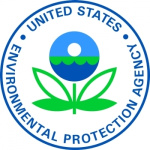- Industry: Government
- Number of terms: 11955
- Number of blossaries: 0
- Company Profile:
U.S. Environmental Protection Agency (EPA) is a federal agency responsible for the development and enforcement of regulations for human health and environment protection. The agency researches and sets standards for environmental programs and delegates. It was founded in 1970 following the proposal ...
Solid waste, composed of garbage and rubbish, which normally originates from residential, private households, or apartment buildings. Domestic waste may contain a significant amount of toxic or hazardous waste from improperly discarded pesticides, paints, batteries, and cleaners.
Industry:Agricultural chemicals
The direction of ground water flow due to changes in the depth of the water table.
Industry:Agricultural chemicals
Chemicals that consist entirely of hydrogen and carbon. Hydrocarbons contribute to air pollution problems like smog.
Industry:Agricultural chemicals
A body of water or sludge confined by a dam, dike, floodgate, or other barrier.
Industry:Agricultural chemicals
The number of animals that are harmed or killed as a result of pesticide application.
Industry:Agricultural chemicals
The destruction of solid, liquid, or gaseous wastes by controlled burning at high temperatures. Hazardous organic compounds are converted to ash, carbon dioxide, and water. Burning destroys organics, reduces the volume of waste, and vaporizes water and other liquids the wastes may contain. The residue ash produced may contain some hazardous material, such as non-combustible heavy metals, concentrated from the original waste.
Industry:Agricultural chemicals
A furnace for the routine burning of waste materials using controlled flame combustion.
Industry:Agricultural chemicals
A waste unsuitable for mixing with another waste or material because of reactivity hazards.
Industry:Agricultural chemicals
A chemical used as the point of reference for standardizing the common toxicity of the chemical members of the CAG.
Industry:Agricultural chemicals
Breathing air inside a habitable structure, often highly polluted because of lack of exchange with fresh oxygen from outdoors. Solvents, smoke, paints, furniture glues, carpet padding, and other synthetic chemicals trapped inside contribute to an often unhealthy environment.
Industry:Agricultural chemicals
